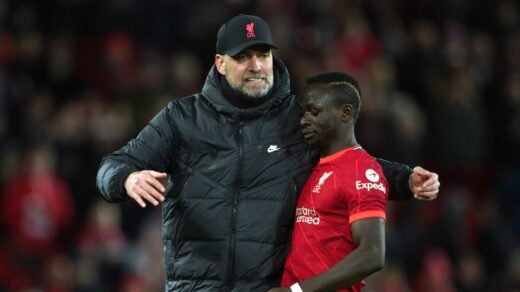The 2023 Women’s World Cup is now officially 100 days away, and of the top 12 ranked teams in the world, there isn’t a single one preparing for the tournament without at least one big reason to worry.
These teams comprise the favorites to win it all once the World Cup begins in July, but what could prevent each of them from lifting the trophy? From player revolts, to injured stars, to fights with their federations and more, every team is facing a unique challenge.
With ESPN sending several reporters to Australia and New Zealand for this summer’s big tournament, we’ve asked our experts to dig into the big, burning questions that face these top dozen World Cup contenders. Caitlin Murray, Sophie Lawson, Mark Ogden, Julien Laurens, Sam Marsden, Tim Vickery and Marissa Lordanic break down where these powerhouse teams stand, presented in the order of their FIFA world rankings.
 No. 1: The United States
No. 1: The United States
2:35
The issues facing the big teams 100 days from the World Cup
A host of ESPN FC contributors explain the key issues facing some of the tournament favourites 100 days out from the Women’s World Cup.
What’s the right answer to the USWNT’s midfield conundrum?
When the U.S. won the Women’s World Cup in France four years ago, the American squad boasted arguably the best “No. 6” defensive midfielder in the world: Julie Ertz. But after the 2021 Olympics, Ertz stepped away from the game to focus on starting a family. Unlike striker Alex Morgan or defender Crystal Dunn, Ertz was not training up until she couldn’t, nor was she rushing to get back — Ertz has been without a club team for all of 2022 and all of 2023 so far.
So USWNT coach Vlatko Andonovski moved on without Ertz, but unfortunately for him, the U.S. pool hasn’t had anyone like Ertz, a defensive destroyer who flies into tackles and covers tons of ground. Moving the USWNT’s existing midfielders there, like Lindsey Horan, hasn’t worked. Washington Spirit midfielder Andi Sullivan has been the best option, but she still isn’t the same type of No. 6 as Ertz, operating best as a deep-lying midfielder who distributes the ball and helps in possession. Andonovski has even experimented with a double-pivot, which helps with the defensive work Ertz used to do but limits the U.S. attack going forward.
1:50
What is the biggest issue for the USWNT ahead of the World Cup?
Herculez Gomez and Sebastian Salazar explain the biggest question mark facing the USWNT ahead of the World Cup.
But now, maybe Andonovski doesn’t need to replace Ertz after all. To the surprise of pretty much everyone, Ertz abruptly announced she is returning to soccer and after 611 days, she returned for the U.S. against Ireland in a 2-0 win on Saturday. She didn’t look like the Ertz of 2019, but as Andonovski said recently: “If somebody’s 80% or 90% is still better than somebody else’s best, then too bad.”
The problem is, we still don’t know if Ertz’s 80% or 90% is better than what Andonovski has spent the past 20 months figuring out. She still doesn’t have a club team, the last international break before the World Cup is ending, and there’s not much time left for Andonovski to pick his roster. Taking Ertz could be a gamble, and it might decide the USWNT’s World Cup fate. — Murray
 No. 2: Germany
No. 2: Germany
Amid a revolving door of players, is there an adequate Plan B?
On a roll since the start of the 2022 Euros last summer, Germany have rarely put a foot wrong — and yet for all their great form, the team under current coach Martina Voss-Tecklenburg has consistently struggled with losing key personnel.
From injuries to Dzsenifer Marozsán at the 2019 World Cup and Alex Popp in the Euro 2022 final as well as notable absentee Lena Oberdorf in Germany’s second friendly against the USA last November, Voss-Tecklenburg has frequently been without a solution whenever Germany are stuck without a key player. As much as it would be a tall ask for any team to play its best football without a cornerstone player, it’s the lack of a contingency plan that has cost Germany on multiple occasions during the coach’s tenure.
Voss-Tecklenburg has been stubborn in attempting to keep playing in a way that works only with the players she doesn’t have available. (Barring injuries, Popp and Oberdorf should be present at the World Cup, but Marozsán announced her retirement in March, with her final games happening this month.) Although there is no other player available to Voss-Tecklenburg who can do what Oberdorf does to the same standard, the question going into the World Cup for Germany is what happens if they lose another key player ahead of the tournament or even during it: how do the coach and entire team react? And should the worst happen, is there a Plan B in place for the Euro runners-up? — Lawson
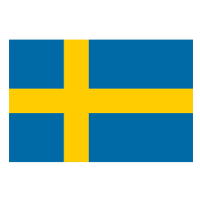 No. 3: Sweden
No. 3: Sweden
Can the Swedes sort their identity for the World Cup and play their best style?
For a team that dominantly charged through to the Olympic final in 2021, it was unthinkable for Sweden to look so lost less than a year later during last summer’s Euros in England. Yet that was the way the story played out for the Scandinavians. Instead of building on their Olympic form, it was instead a case of “Will the real Sweden please stand up?”
Either by leaning into a more traditionally Swedish conservative defensive system or tapping into the attacking style that coach Peter Gerhardsson has preached since taking charge, Sweden are generally a strong tournament team. But rather than going from strength to strength over the past few cycles, the ability of the team to actually turn up with its best football has been a coin flip.
So, whether we will see a Sweden that are leading with their best attacking foot as they did in Japan during the Olympics, or struggling to find each other with simple passes as they did throughout the Euros, is the question for Sweden heading into the World Cup. The biggest positive for Gerhardsson, which yet might tip the scales, is that the team was so subpar in England and seemed to take so many missteps that the manager, his coaching staff and the players must have learned from the experience. But until their first group game in Australia this July, we don’t know which Sweden will turn up. — Lawson
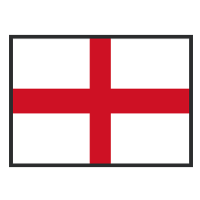 No. 4: England
No. 4: England
0:48
Wiegman: Mead needs a miracle to be fit for the World Cup
Sarina Wiegman speaks about Beth Mead’s World Cup hopes and previews England’s games against Brazil and Australia.
Can the Lionesses remain favourites even without Beth Mead?
The fitness of Beth Mead is the major question mark hanging over England‘s bid to win the World Cup for the first time and, according to Lionesses coach Sarina Wiegman, the Arsenal forward is fighting a losing battle to play in Australia and New Zealand.
Wiegman said at the end of March that Mead, who suffered an anterior cruciate ligament injury during the WSL fixture against Manchester United in November, is not in her thoughts for the World Cup as she continues to recover. But Mead has not given up hope of proving her fitness in time to make Wiegman’s squad, so while the coach is planning for the worst-case scenario of being without her, there remains an outside prospect of the 27-year-old being fit to play: expect a final decision to be made at the end of May.
If Mead is fit and available, England’s status as pre-tournament favourites alongside the United States will be justified. Mead emerged from England’s successful Euro 2022 campaign as Golden Boot winner and the honour of being named as Player of the Tournament as the team won the nation’s first major honour, so her importance to Wiegman’s side is obvious. Without Mead’s goals and all-round ability, England’s chances of winning the World Cup would take a major hit. –Ogden
 No. 5: France
No. 5: France
Can a new coach get players get on the same page after the sacking of a divisive manager?
The past several weeks have been rocky for the French team, to say the least. France captain Wendie Renard announced she would opt out of playing for the French national team as long as coach Corinne Diacre remained at the helm. Two other star players, Marie-Antoinette Katoto and Kadidiatou Diani, followed suit. The federation sacked Diacre, replacing her with Hervé Renard (no relation to Wendie Renard), who will have less than four months to work with the team before the World Cup begins.
Because of the turmoil of the past few weeks, we tend to forget that France reached the semifinal of the past Euros only a few months ago. Finally getting to the last four of a big tournament was Les Bleues‘ glass ceiling, and they finally broke it while in England.
For six years, Diacre had a difficult relationship with her players, but on the pitch, the results were never as bad as that tension might’ve suggested. Renard has recognised already the talent and potential of the dressing room. The French squad has youth, experience, pace, skills, depth and physicality — the ingredients for a potential World Cup winner. Renard is looking to inject energy, confidence and a strong bond among his new players. Through his career, he’s been regarded as a manager who is inspirational, and he should bring the same level of motivation to a talented French team.
What’s more, he is ringing in the changes. The fact that new mother Amel Majri could bring her baby daughter with her to the Clairefontaine training centre for the whole current international break is a huge first for France — Diacre never allowed it before, despite other teams, like the United States, making similar accommodations. Renard is doing everything right so far and already has his dressing room fully on board. — Laurens
 No. 6: Canada
No. 6: Canada
0:49
Why is the Canadian women’s soccer team striking ahead of the SheBelieves Cup?
Hannah Storm explains why the Canada women’s team are striking due to budget cuts and equal pay issues.
Can the players sort issues with their federation, or will distractions persist?
Canada should be entering this World Cup brimming with confidence. They won the world’s last major tournament, earning gold at the Tokyo Olympics, and have been steadily on the rise for years, leading to a logical conclusion that 2023 could be their breakout World Cup. Instead, however, a dark cloud has been hanging over the heads of players as they fight with their federation, the Canada Soccer Association.
The dispute came to the fore in February when players vowed to strike, arguing that the federation hadn’t paid compensation owed to the players, and that the federation made unacceptable cuts to the women’s program. When CSA threatened to sue if they went on strike, the players agreed to report to the SheBelieves Cup, where they looked flat and finished last in the four-team tournament.
Since then, things haven’t improved much — the two sides agreed last month to a new interim contract, but when CSA revealed details of those private negotiations without warning, the players expressed dismay and “shock” at the tactic. Just last week, Nick Bontis, the man who recently stepped down as the president of CSA over this dispute, publicly apologized to captain Christine Sinclair for labeling her complaints as “bitching.”
It should be noted, however, that a national team fighting with a federation doesn’t automatically spell doom — just ask the U.S. women’s national team, which has plenty of experience fighting with U.S. Soccer, including when they filed their high-profile equal pay lawsuit months before the 2019 World Cup that they ultimately won. But it sure doesn’t make things easier, and if Canada’s recent results are anything to go by — three losses in their past four games — they better hope this dispute ends soon so they can focus on soccer again. –Murray
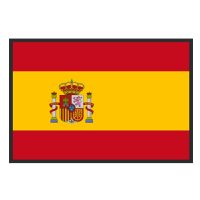 No. 7: Spain
No. 7: Spain
Will any of the “rebel 15” star players accept call-ups, or will they miss the World Cup?
Save a dramatic late twist, Spain will head to the World Cup without 15 of their best players, including six from powerhouse club Barcelona.
The 15 players announced in September they did not want to be considered for selection until there were significant changes and improvements made to the make-up of the coaching staff and structure around the team. Yet no such changes have been implemented and the Royal Spanish Football Federation, or RFEF, has made it clear it will stand by coach Jorge Vilda and his coaching staff (although the players never explicitly demanded his removal). So far, there’s no indication that either side will relent in the run-up to the World Cup. The tournament will be poorer for the loss of Barca’s Mapi Leon, Aitana Bonmati and Patri Guijarro, among others.
Interestingly, though, Barca defender Irene Paredes did return to the Spain squad for this month’s international friendlies. She was never officially part of the 15 but had fronted a news conference in September asking for change. Pachuca forward Jenni Hermoso is also involved again.
The biggest variable regarding the squad is back-to-back Ballon d’Or winner Alexia Putellas, considered the best player in the world before her ACL tear last summer. The Barca midfielder is back in training after eight months recovering and in theory, she will be fit for the World Cup. While injured, her support for the 15 was made clear, but she never announced herself unavailable for selection. Speaking recently, Vilda did not close the door on taking her to the World Cup and said he will speak to her when she returns to action, potentially later in April. — Marsden
 No. 8: The Netherlands
No. 8: The Netherlands
Can a new and inexperienced coach handle the stakes of the biggest tournament in the world?
With enigmatic striker Vivianne Miedema ruled out of the World Cup with an ACL injury, there was an immediate worry after her injury as to where the goals might come for the Netherlands in Australia and New Zealand. However, with six different goal scorers in the seven games since new manager Andries Jonker took over last year, the early signs of others being able to chip in with goals are encouraging.
The wider worry is Jonker’s relative inexperience at this level. Now in his 35th year as a coach, he’s never led a senior team at a major tournament before, spending the majority of his career either coaching youth and second teams or acting as an assistant to others. Much like his predecessor Mark Parsons, who departed after last summer’s Euros, Jonker has leaned on some of the more experienced players in his group. Deferring to the veterans while also trying to integrate some of the young and talented players coming through — and also trying to do that during a World Cup — will be a new and potentially complicated task for the coach.
The Netherlands are a deeply talented squad, but one with many unknowns for both coach and players alike. — Lawson
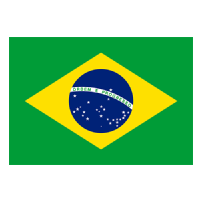 No. 9: Brazil
No. 9: Brazil
Are Brazil still a big fish in a small pond, or is new coach Pia Sundhage getting them ready to make a splash?
The question hanging over Brazil could hardly be clearer: are they anything more than the bosses of a small hill? Hosts Colombia pushed them hard in the final of last year’s Copa América Femenina, but Brazil still won the tournament without conceding a single goal. This is all very well on the continent, but Brazil’s sights are set much higher.
For a few years at the start of the century, Brazil kept falling short in major finals, but had a claim to be the best side in the world — a feat entirely down to the unplanned, spontaneous appearance of talent. The likes of Marta (who is set to appear in her sixth World Cup, a FIFA record) and Debinha have anchored this team for more than a generation, but by the 2012 London Olympics, it was obvious that in a rapidly developing sport, Brazil had fallen behind. More recently there has been a belated attempt to play catch-up — the domestic league for Brazil’s women has received unprecedented investments, and following the 2019 World Cup, vastly experienced Swedish coach Pia Sundhage was brought in to take charge of the national team.
Under Sundhage, Brazil won the 2022 Copa America, but lost warm-up friendlies against Sweden and Denmark, and they recently fell to Canada and USA in the SheBelieves Cup invitational. At this stage, it’s hard to know if they have made real progress under Sundhage. Or, if they have developed, how do their efforts compare with those of other continents?
There were extremely positive signs in the second half against England in Thursday’s first-ever Finalissima. But one way or the other, the World Cup will supply some definitive evidence. — Vickery
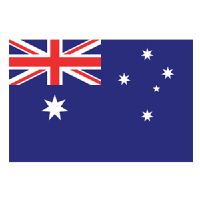 No. 10: Australia
No. 10: Australia
Can the Matildas navigate co-hosting pressure and finally live up to their enormous potential?
Based on the Matildas‘ current good form and recent reentry into FIFA’s top 10 world rankings, making it to the quarterfinals is the pass/fail mark for the Aussies at their home World Cup. If the team doesn’t make it out of the so-called “group of death” — with Nigeria, the Republic of Ireland and Canada — it will rightly be deemed a failure. A round-of-16 exit will be disappointing and raise serious questions about whether or not Australian football has maximised the talents of this generation, led by one of the best strikers in the world in Sam Kerr.
As such, pressure is mounting on manager Tony Gustavsson to not only get the most out of his squad. A fifth trip to the quarterfinals would outdo the team’s run in France and be perfectly acceptable, but it might not satiate the lofty expectations of the fans who saw the Matildas finish fourth at the Olympics or those who believe, flippantly or genuinely, that they can win the whole thing. — Lordanic
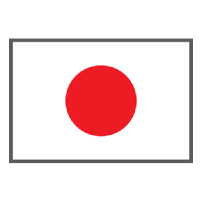 No. 11: Japan
No. 11: Japan
Can Nadeshiko stick to their core identity and build confidence to evolve into a more dangerous side?
For the first year of his reign as Japan head coach back in 2021, Futoshi Ikeda looked like a man out of his depth. Although he inherited a supremely talented squad from Asako Takakura, who failed to deliver over five years in the role of head coach, the Nadeshiko looked to be stuck in the same rut of talent and potential not equating to performances.
However, after more time in the role, things finally seemed to be clicking into place for Ikeda and Japan at the 2023 SheBelieves Cup, with narrow defeats to the U.S. and Brazil followed by an impressive 3-0 win over Canada. The question is not just whether Ikeda can keep delivering better performances and positive results, but if the team can stay true to his ideas and lean on the passing strength of his players.
For Japan, the key will be playing their trademark possession game, which offers one of the most dynamic styles in world football, as well as keeping their midfield core (Jun Endo, Yui Hasegawa and Hina Sugita) fit and healthy. But to build beyond that, Japan must work on keeping belief and hunger in attack, and understanding that sometimes they will have to force the issue to score and progress. — Lawson
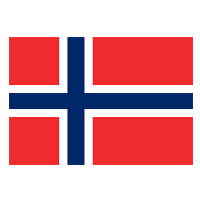 No. 12: Norway
No. 12: Norway
2:23
Hayes: England were relentless in 8-0 thrashing of Norway
Emma Hayes speaks about England’s 8-0 win over Norway at the Women’s European Championship.
Was a coaching change the answer to all of underperforming Norway’s problems?
Coming in at No. 12 in FIFA’s world rankings, Norway is a dark horse to win the World Cup, at least on paper. First, let’s start with the fact that ubertalented striker Ada Hegerberg rejoined the Norway squad last year after five years of refusing to suit up for the national team due to what she called a lack of support from the Norwegian federation. Her return was hailed as a game-changer for Norway ahead of last summer’s Euros, but now that she has more than a full year with the national team, she should fit more seamlessly overall.
That brings us to the biggest reason for optimism: after years of subpar performances under manager Martin Sjögren, the Norwegian federation finally had enough once Norway suffered a humiliating Euros last summer, which included an 8-0 loss to England and a group stage exit. That came after Sjögren’s other greatest hits: a group stage exit for Norway at the 2017 Euros, and a quarterfinals exit at the 2019 World Cup.
With Hegerberg and Caroline Graham Hansen — two of the best players in the world — representing Norway, the prevailing sentiment has been the Norwegians have more to offer than Sjögren allowed. Now, it’s up to Hege Riise, who took the helm in August. Results since Riise took over — including a draw to France, a draw to England and a win over the Netherlands — suggest the team could be on the right track as the Norwegian players have looked more balanced and in sync. Come July, will that still be the case? — Murray

